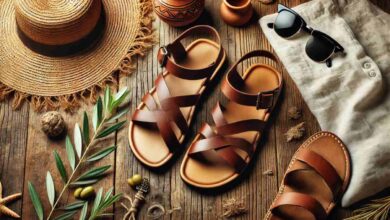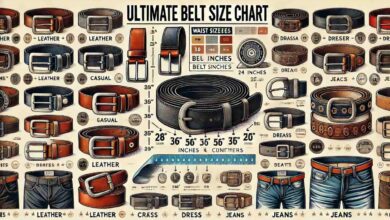Are Jeans Business Casual?

The very definition of business casual in recent years has evolved. It has become a cross between traditional professional clothes and those that are more relaxed and comfortable. One of the most common questions is, “Are jeans business casual?” This has instigated debate, as opinions vary immensely depending on industry, company culture, or simple taste. In this article, we’ll look into these factors that would determine whether jeans can be termed business casual and guide the person on how to wear jeans professionally.
The Evolution of Business Casual
The concept of “business casual” was introduced during the late 20th century. In this era, the majority of businesses adopted a more flexible policy regarding the dress code of their workers. It can be mentioned here that the business dress code conventionally comprises suits, ties, and formal dresses. Over the years, with the development of the corporate sector, the dress codes have also experienced a series of transformations. As such, business casual was introduced to find a middle ground between professional and comfortable, making employees feel more relaxed but still maintaining a polished look
Defining Business Casual
Before getting into the nitty-gritty around jeans, an understanding of what typically constitutes business casual is helpful. Business casual generally encompasses:
- Dress shirts or blouses
- Slacks or chinos
- Skirts or dresses (knee-length or longer)
- Blazers or cardigans
- Closed-toe shoes, such as loafers, oxfords, or flats
This dress code ideally tries to be less formal than traditional business attire without the overly relaxed nature of casual wear. One just needs to look neat, professional, and put-together without needing a full suit and tie.
Are Jeans Acceptable?
Even though jeans are staple clothes in many a person’s closet, they are considered far too casual for the workplace. This point of view, however, is slowly changing. Whether it is right to wear jeans in business-casual attire mostly depends on certain factors:
1. Company Culture
Company culture plays a significant role in determining dress codes. In companies of a more traditional nature, like finance and law, jeans would be put out of place. In the world of technology, marketing, and design, one would surely spot jeans, though probably worn with other business casual items.
2. Type of Jeans
All jeans are not created equal. A pair of jeans can either be very appropriate or totally inappropriate for business casual based on style, color, and fit. Here is what you should look for:
Dark Wash: A darker pair of jeans will look a lot more professional and polished than a light or distressed denim counterpart.
Fit: When making your choice, pick jeans that are not too tight or too baggy. Overly casual jeans and ripped or torn jeans are a big no-no.
No Distressing: Jeans for business casual should not have rips, frays, or excessive fading.
3. How You Style Them
The trick with this lies in how you can style them for your workplace; to do so would make a world of difference. Pair jeans with more formal business casual looks to elevate the look. Ways to wear jeans appropriately:
Top Choices: A dress shirt, blouse, or a smart knit top are good options. Your shirt should definitely be tucked in.
Layers: Put a blazer or cardigan over the top and you’ve instantly made your jeans more professional.
Footwear: Closed shoes such as loafers, oxfords, or low heels are recommended. Make sure your shoes do not look like sneakers or have a very sporty.
Guidelines for Wearing Jeans as Business Casual
If you decide to incorporate jeans into your business casual wardrobe, here are some guidelines to follow:
1. Check the Dress Code
Find your company’s dress code policy before wearing jeans to work. Some organizations are very specific about what they consider acceptable. As always, ask the HR department or pay attention to what other employees are wearing if you’re unsure.
2. Keep It Clean and Simple
Go for clean jeans, with no visible wear and tear. Stick to classics without much detail and excessive fuss. The simpler and more refined the jeans, the better they fit into a business casual wardrobe.
3. Balance Your Outfit
Dressier items like jeans can balance the rest of your outfit. A blazer could be a good way to make it more professional, but a clean button-down will certainly do the trick. Avoid too many casual pieces like graphic tees and hoodies.
4. Pay Attention to Fit
Fit is very important when wearing jeans to work. Make sure your jeans are well-fitted but not tight or too loose. If it’s a little difficult for you to find skinny jeans, straight leg and boot cut can be an alternative.
5. Accessorize Thoughtfully
Accessories can elevate your outfit. A belt, watch, or understated piece of jewelry makes your jeans look sophisticated. Just don’t go for anything too flashy or casual that may wear off the professional look.
Situations Where Jeans Are Not Appropriate
While jeans can be part of a business casual wardrobe, there are still times when you should not wear them. These include:
Formal Meetings: Important meetings with clients, executives, or stakeholders should involve formal dressing.
Presentations: For the most formal presentations to an audience, business attire may be worn traditionally.
Job Interviews: Unless told otherwise, always dress more formally in business attire for a job interview to be on the safe side.
The Bottom Line
Business casual acceptance of jeans would vary according to several factors, including company culture, the style of jeans, and how one dresses them up. Dark, well-watching, and not-too-distressed, pairs of jeans combined with more business-casual types of clothing will certainly let you pull off a look that is polished and professional enough for many jobs. One should, however, be mindful of the dress code in their own company or organization and the general guidelines given out by management regarding wearing jeans to work. With these simple rules in mind, you can easily add jeans to your business casual wardrobe with confidence.




